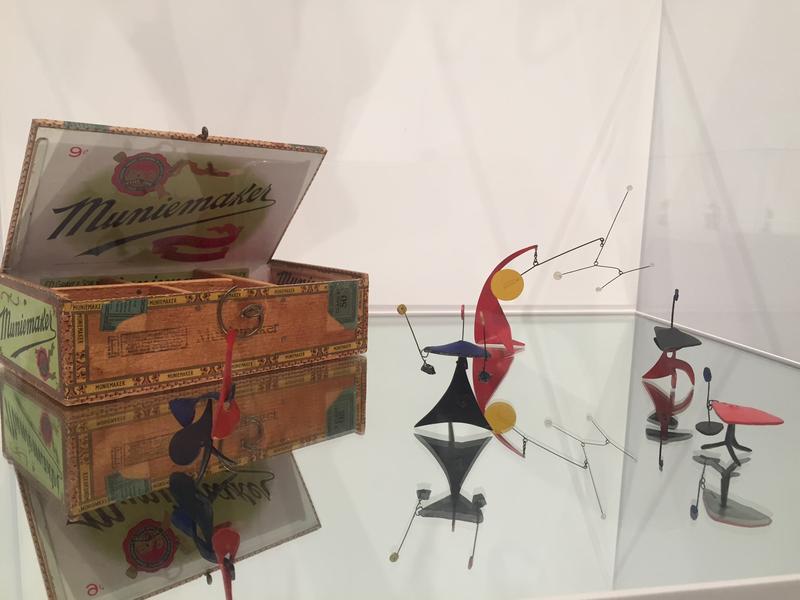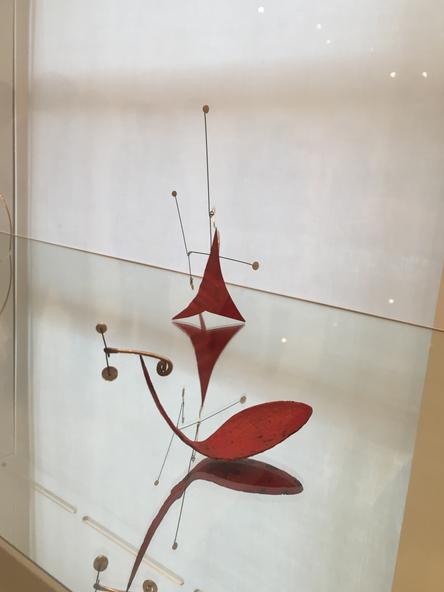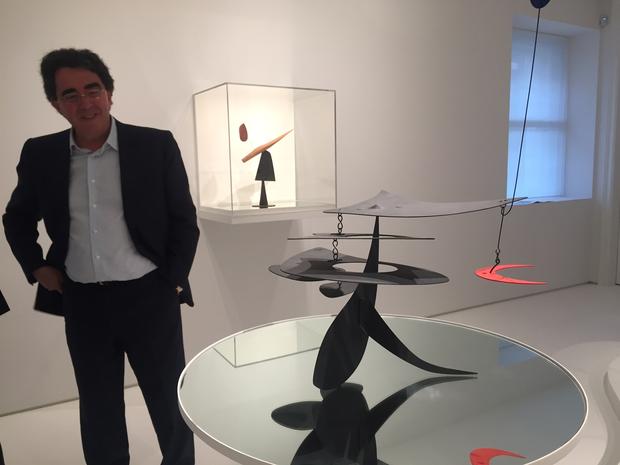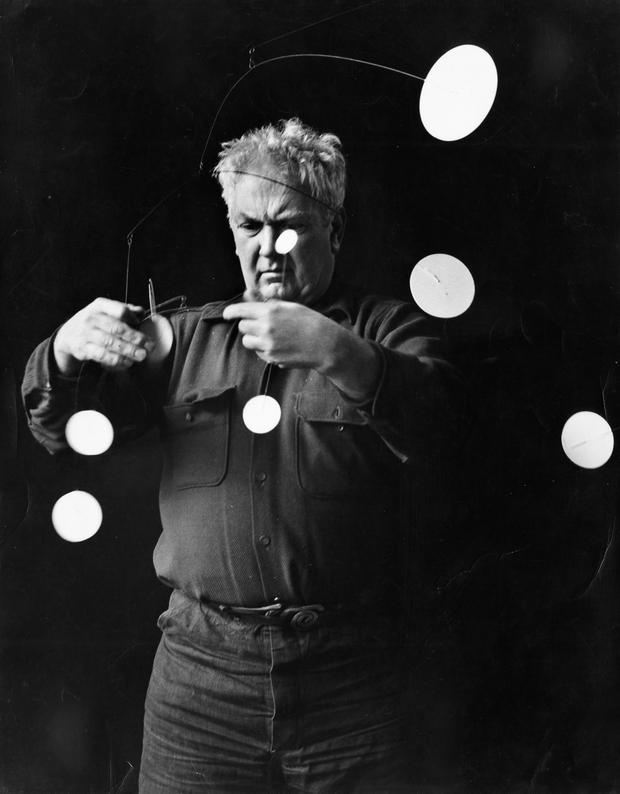
The architect behind grand projects— including a controversial transit hub 10 years in the making — is presenting a much smaller work uptown.
Spanish architect Santiago Calatrava, who designed the World Trade Center PATH transit hub with gigantic ribs of steel that resemble a flying bird, created two white rooms to present 40 small-scale sculptures by American artist Alexander Calder at Dominique Lévy gallery in the Upper East Side.
The rooms have curved steps where several circular pedestals and glass cabinets — both with mirrored bases — exhibit Calder’s sculptures and mobiles.
It’s not uncommon for architects to design art shows. Frank Gehry has designed several exhibitions at the Los Angeles County Museum of Art (LACMA), including one with Calder sculptures last year.
The exhibition at Dominique Lévy is entitled MULTUM IN PARVO (from the Latin, “much in little”) and is presented in collaboration with the Calder Foundation. It presents works that span 30 years in Calder’s career, including a cigar box with little sculptures that he built for his wife in 1948, one of his smallest sculptures from the 1950s that measures just over one inch high, and two of the works he mailed to Lois Carré in Paris in 1945 on the suggestion of his friend Marcel Duchamp.
Calatrava designed the exhibit with his son Gabriel. He said the mirrors allow visitors to see Calder’s pieces from a rare point of view. “You see them as if you were down under the sculpture itself,” he said.
Calatrava said he admires Calder’s work for his simple choice of materials, like glass and metal debris, but also for his complexity. “He has an enormous intellectual dimension, with the floating things, you know, and all this ethereal character,” he said.
Alexander S. C. Rower, chairman and president of the Calder Foundation and the artist’s grandson, said he is proud to own one piece in particular that is in the show, made of an old spoon.
He said in 1933 his grandfather bought a dilapidated dairy farm in Connecticut and he excavated it to find pieces of glass and metal for his work. Among them was a broken spoon, which he transformed into a tiny sculpture in 1954. “It’s a very important piece to me,” he said. “It describes his intention, it describes his aesthetics.”
Rower was 13 when his grandfather died in 1976. He said Calder was a friendly person in public, but very serious when working. “He would show me how to use the tools, let me use his materials, very generous spirit about his space, but if I went into the studio just to fool around, then he would kick me out,” he said.
Rower confessed he was initially “terrified” of Calatrava designing the show, an idea that came from Dominique Lévy, the owner of the gallery, but he is pleased with the results. “I think it’s a miracle,” he said. “I usually hate everything." The only problem with the show for him is that visitors have to wear little booties to cover their shoes and protect the white floors. “They are not fashion-conscious,” he said, laughing.
Regarding his other project downtown, Calatrava said he is “very happy” with how the transit hub is coming along, and he believes it will be all completed at the end of next year, at least a year later than the most recent projection. Construction started in 2005 and the Port Authority says it has cost approximately $4 billion.




